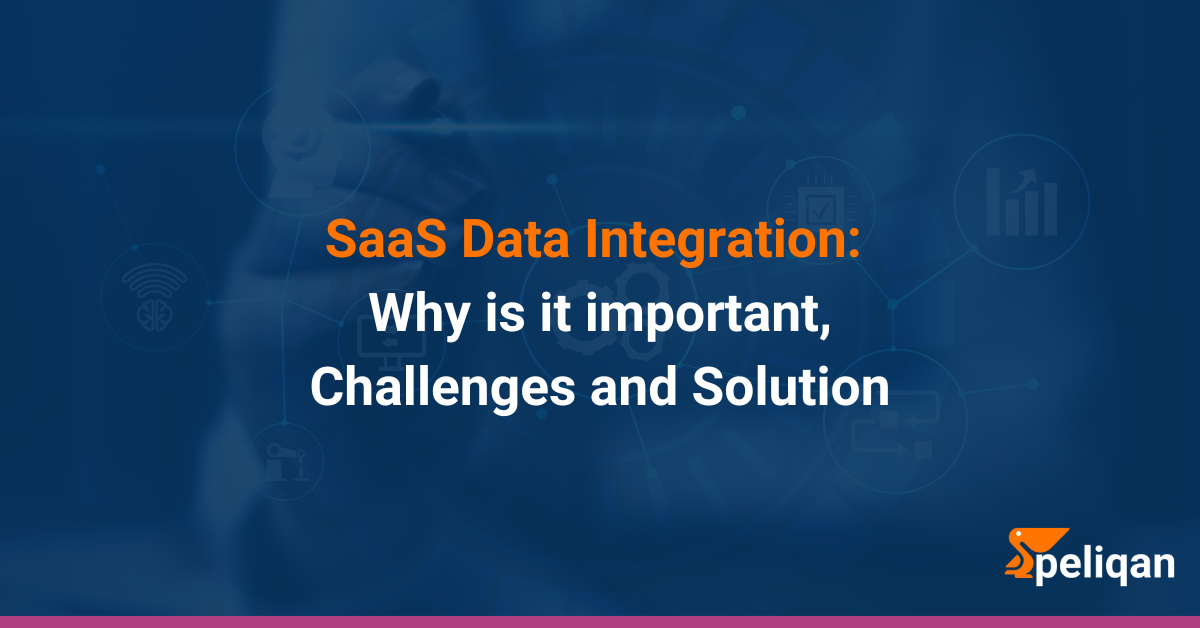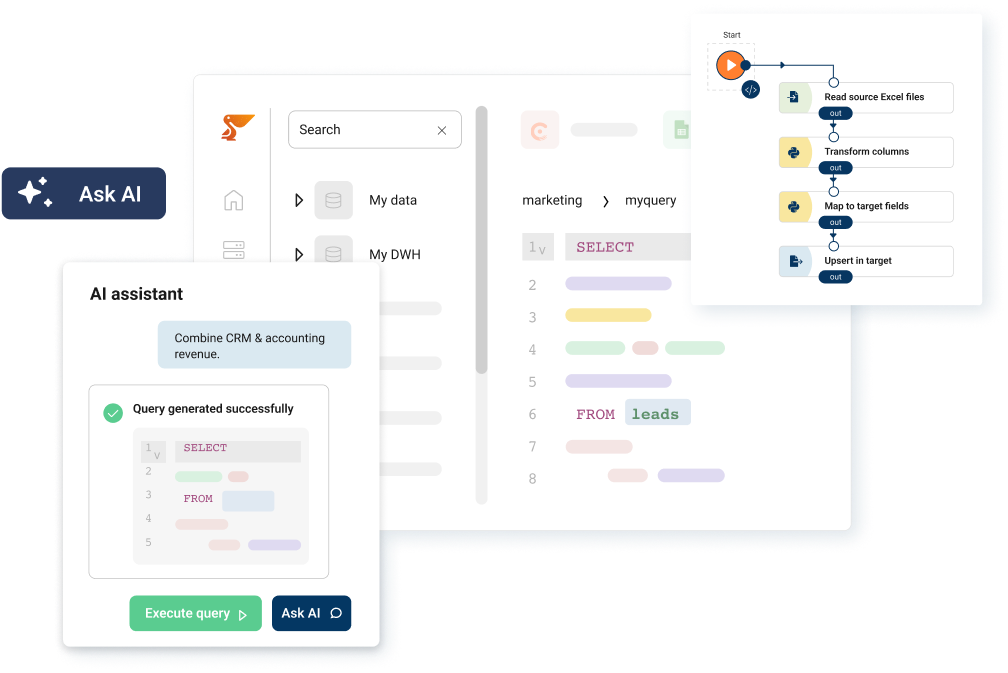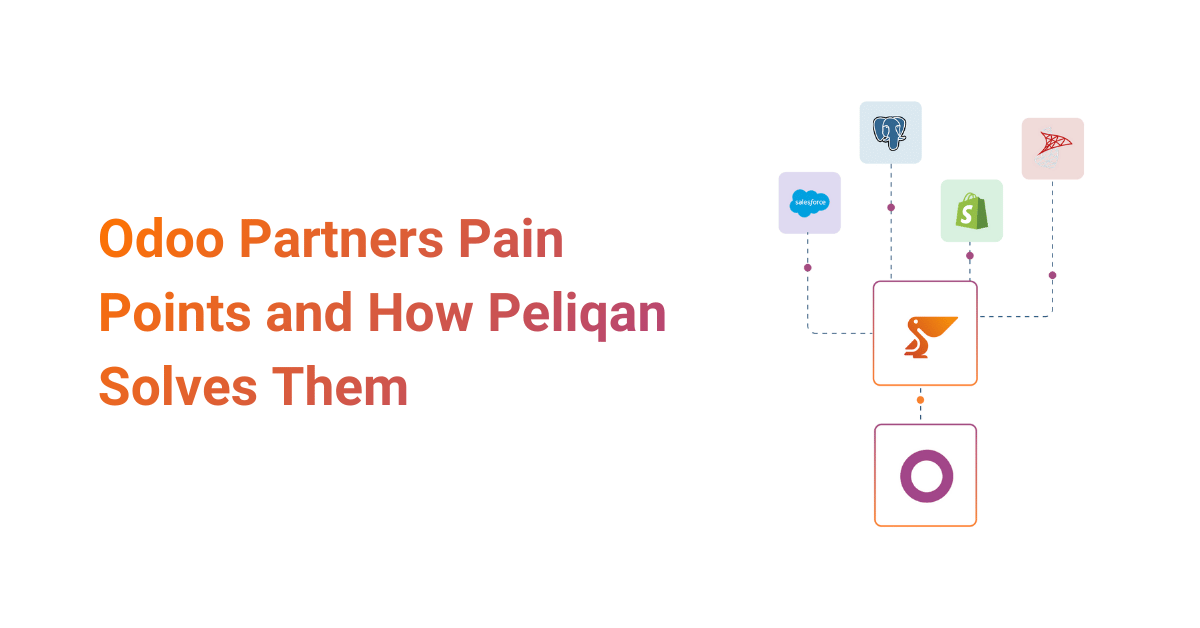In today’s digital landscape, Software as a Service (SaaS) solutions have become integral to business operations, offering a wide array of features to manage everything from marketing automation to customer relationships.
However, the true potential of these tools often remains locked away in data silos – isolated pockets of information trapped within individual applications. This fragmentation hinders collaboration, creates inefficiencies, and ultimately limits valuable insights.
Enter SaaS data integration – the key to unlocking the full power of your SaaS ecosystem. By breaking down these data silos, businesses can unleash a new level of efficiency and insight.
But what exactly is SaaS data integration, and why is it so crucial in today’s business environment? Let’s dive in and explore this game-changing approach to managing your cloud-based applications.
What is SaaS Data Integration?
At its core, SaaS data integration refers to the process of connecting various cloud-based applications to enable seamless data exchange. Imagine, for instance, keeping customer data perfectly in sync between your CRM and ERP systems.
By fostering this interconnectedness, SaaS integration delivers three key advantages:
- Improved Collaboration: Teams across departments can work together more effectively with a complete view of the customer journey or business operations.
- Enhanced Business Processes: Automated data flows between SaaS applications allow companies to avoid manual repetitive work, optimize processes, and reduce human error.
- Data-Driven Decision Making: With integrated data from multiple sources, businesses can gain deeper insights and make more informed decisions.
The importance of SaaS data integration cannot be overstated. According to a recent Gartner report, integrations are the third most important factor for SaaS buyers globally. This underscores the critical role that seamless data flow plays in the modern business ecosystem.
SaaS Data Integration Market
The global data integration market is experiencing explosive growth, reflecting the increasing importance businesses place on unifying their data landscape. Recent projections paint a vivid picture of this trend, estimating that the market will reach a staggering $43.38 billion by 2033.
But what’s driving this tremendous growth? Several factors are at play:
- Proliferation of SaaS Applications: As businesses adopt more cloud-based solutions, the need for integration grows exponentially.
- Data-Driven Decision Making: Companies are recognizing the value of aggregated data from multiple sources for strategic insights.
- Customer Experience Focus: Integrated data enables businesses to provide more personalized and seamless customer experiences.
- Regulatory Compliance: Data integration helps companies maintain consistent and accurate data across systems, aiding in regulatory compliance efforts.
These drivers highlight the increasing importance businesses place on unifying their data landscape. But why exactly is SaaS integration so crucial for modern businesses? Let’s explore this question in more depth.
Why is SaaS Integration Crucial?
The benefits of SaaS integration extend far beyond simple data synchronization. Here are several compelling reasons why businesses are prioritizing this approach:
- Improved Efficiency: By eliminating the need to manually transfer data between applications, integration saves time and reduces the risk of errors.
- Enhanced Collaboration: Integrated data empowers teams across departments to work together more effectively with a holistic view of the customer journey or business operations.
- Improved Customer Experience: A unified customer view allows businesses to personalize experiences and deliver exceptional customer service.
- Real-Time Data Access: Integration enables real-time data synchronization, ensuring that all teams have access to the most up-to-date information.
- Scalability: As businesses grow, integrated systems can more easily adapt to increasing data volumes and new requirements.
Beyond these benefits, many businesses leverage direct connections between SaaS platforms, known as SaaS to SaaS integrations, to streamline processes and improve data accessibility even further. SaaS integrations, along with reseller hosting, are essential for businesses as they enable seamless data flow between platforms, enhancing operational efficiency and decision-making. By connecting different SaaS tools and leveraging reseller hosting, organizations can streamline processes, reduce manual effort, and unlock greater insights.
SaaS to SaaS Integration
With the explosion of cloud-based tools, SaaS to SaaS integration has become a critical capability for many organizations. This type of integration allows direct data transfer between different SaaS applications, such as between CRM and marketing automation platforms, without needing to pass through a central data warehouse.
By implementing SaaS to SaaS integrations, companies can:
- Automate workflows seamlessly across platforms, reducing repetitive tasks.
- Access real-time data for timely insights and actions.
- Enhance data consistency by eliminating manual transfers that can introduce errors.
For example, integrating a customer support platform with a CRM system can provide a unified view of customer interactions, enabling better support and personalization. This streamlined connectivity is ideal for businesses looking to maximize the value of their SaaS tools and drive operational efficiency.
Top 5 SaaS Data Integration Challenges
Integrating data from multiple SaaS applications is a complex task. Let’s explore the most common challenges businesses encounter with SaaS data integration and how Peliqan, a powerful data integration platform, can help overcome them.
Challenge #1: Disparate Data Formats and Sources
SaaS applications are diverse, each with its unique method of storing and structuring data. This disparity in formats – from CSVs and JSON to proprietary databases – poses a significant hurdle to seamless integration. For instance, a company using a CRM tool that stores data in a proprietary database and a project management tool that exports data in CSV format would struggle to integrate these disparate data sources.
How Peliqan can help: Peliqan addresses this challenge with its robust data transformation capabilities. It can ingest data from virtually any SaaS application, regardless of format, and transform it into a standardized, unified structure. This ensures all your data “speaks the same language,” simplifying analysis and utilization.
Challenge #2: Data Silos and Limited Accessibility
Data silos – isolated pockets of information within different departments or applications – are a common obstacle to data-driven decision-making. When valuable customer data is stored in a CRM system, while sales performance metrics are locked away in a separate marketing automation tool, gaining a comprehensive understanding of your customer journey becomes difficult. For example, a marketing team might not have access to crucial sales data, leading to less effective campaigns.
How Peliqan can help: Peliqan breaks down these silos by establishing a central hub for all your SaaS data, providing secure and easy access to integrated data and empowering teams across the organization to make informed decisions based on a unified view.
Challenge #3: Data Quality Issues – Errors, Inconsistencies, and Duplicates
Data quality is crucial for successful data integration. Inaccurate, outdated, or duplicated data can lead to skewed insights and hinder effective decision-making. For instance, duplicate customer records in a CRM system can lead to inaccurate sales forecasts.
How Peliqan can help: Peliqan addresses this challenge with low-code data transformations, data enrichment and data pipelines. Peliqan uses low-code script to identify and remove inconsistencies, correct errors, and eliminate duplicate entries, ensuring the quality and integrity of your integrated data.
Challenge #5: Scalability and Maintenance
As your business grows and your SaaS application landscape expands, your data integration needs will evolve. Traditional integration methods often struggle to keep pace with this growth, requiring constant maintenance and updates. For example, adding a new SaaS application to your stack could require significant IT resources to integrate.
How Peliqan can help: Peliqan is built for scalability. Its intuitive interface and pre-built connectors allow you to easily integrate new SaaS applications as needed. Additionally, Peliqan automates data integration tasks, freeing up your IT team to focus on more strategic initiatives.
These challenges might seem daunting, but with the right strategies, they can be overcome. So, how can businesses navigate these hurdles and unlock the full potential of their SaaS ecosystem? Let’s explore some effective strategies.
Strategies for Successful SaaS Data Integration
To overcome the challenges we’ve discussed and harness the full power of your SaaS ecosystem, it’s crucial to choose the right integration approach. Let’s compare some common SaaS data integration methods:
| Integration Approach | Description | Pros | Cons | Best For |
|---|---|---|---|---|
| Point-to-Point Integration | Direct connection between two applications | – Simple for basic needs – Fast implementation for small-scale integrations |
– Becomes complex with multiple connections – Difficult to scale – High maintenance as number of integrations grows |
Small businesses with few SaaS applications |
| iPaaS (Integration Platform as a Service) | Cloud-based platform that connects various applications | – Scalable – Pre-built connectors for many SaaS apps – Centralized management |
– Can be costly for small businesses – May require technical expertise |
Medium to large businesses with multiple SaaS applications |
| API-led Integration | Uses APIs to connect applications and data sources | – Flexible and reusable – Promotes modularity – Enables real-time data exchange |
– Requires API development and management – May need more initial setup time |
Organizations with strong IT capabilities looking for customizable solutions |
| Data Visualization |
Creates a virtual layer for accessing and manipulating data from multiple sources | – Provides real-time data access – Reduces data replication – Offers a unified view of data |
– Can be complex to set up – May have performance issues with large data volumes |
Businesses needing real-time analytics from multiple data sources |
| ETL (Extract, Transform, Load) | Extracts data from multiple sources, transforms it, and loads it into a target system | – Handles large volumes of data – Good for complex transformations – Supports data warehousing |
– Typically batch-oriented, not real-time – Can be resource-intensive |
Organizations with large amounts of data needing periodic synchronization |
When choosing an integration approach, consider your specific business needs, the number and types of applications you need to integrate, your in-house technical capabilities, and your budget. Often, a combination of these approaches may be the most effective solution for comprehensive SaaS data integration.
By implementing these strategies and choosing the right integration approach, businesses can navigate the challenges of SaaS integration and unlock its full potential.
Peliqan: Your One-Stop Solution for Seamless SaaS Data Integration
Peliqan goes beyond just being a data integration platform; it’s a comprehensive data hub that empowers you to not only unify your information but also unlock its full potential.

Peliqan understands that data is valuable only when it’s put to work. That’s where its robust data activation capabilities come into play. Data activation is the process of taking your integrated data and putting it to work. Peliqan provides a robust suite of tools to achieve this, including:
- Proactive Alerting: Receive instant notifications based on predefined conditions within your data, allowing you to stay ahead of potential issues and take corrective measures promptly.
- Customizable Integrations: Build custom workflows and data pipelines that seamlessly push data into business applications, automate data exchanges with partners, and create a truly connected data ecosystem.
- Machine Learning and AI Predictions: Leverage Peliqan’s integration with ML/AI tools to gain predictive insights from your data. Forecast future trends, identify potential risks and opportunities, and make data-driven decisions with greater confidence.
- Reverse ETL and Data Sharing: Push data back to your business applications or share it securely with partners and suppliers, fostering better collaboration and driving mutual success.
Conclusion
SaaS data integration may seem like a daunting task, but with the right tools and strategies, it can be a powerful driver of business growth. Peliqan goes beyond basic integration, offering a comprehensive data platform with the power to activate your information and unlock its true potential.
Peliqan offers a free trial that allows you to explore its capabilities and see how it can transform your data landscape. You can connect your favorite SaaS applications, build automated workflows, and gain valuable insights from your data – all within a user-friendly, low-code environment.





